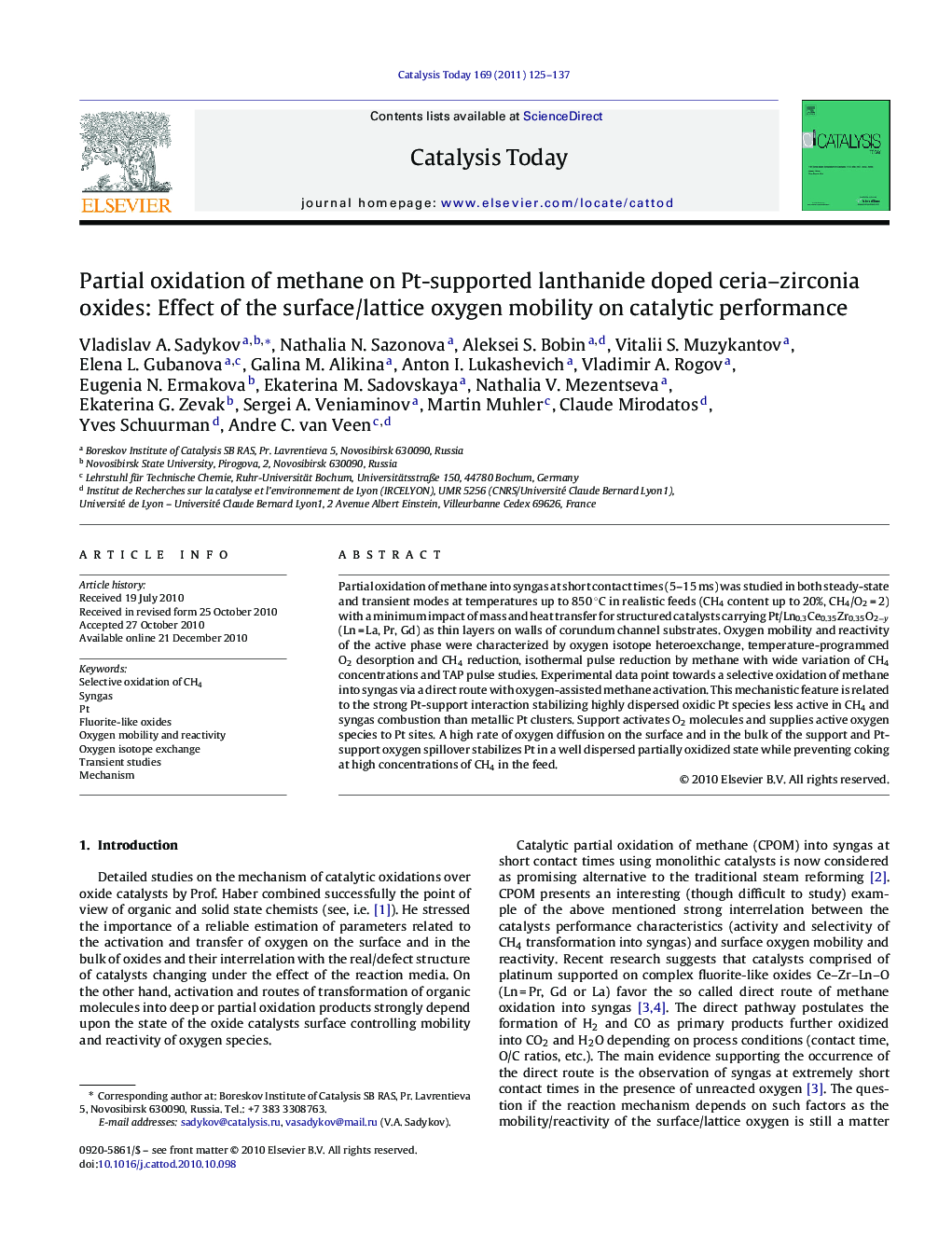| Article ID | Journal | Published Year | Pages | File Type |
|---|---|---|---|---|
| 56050 | Catalysis Today | 2011 | 13 Pages |
Partial oxidation of methane into syngas at short contact times (5–15 ms) was studied in both steady-state and transient modes at temperatures up to 850 °C in realistic feeds (CH4 content up to 20%, CH4/O2 = 2) with a minimum impact of mass and heat transfer for structured catalysts carrying Pt/Ln0.3Ce0.35Zr0.35O2−y (Ln = La, Pr, Gd) as thin layers on walls of corundum channel substrates. Oxygen mobility and reactivity of the active phase were characterized by oxygen isotope heteroexchange, temperature-programmed O2 desorption and CH4 reduction, isothermal pulse reduction by methane with wide variation of CH4 concentrations and TAP pulse studies. Experimental data point towards a selective oxidation of methane into syngas via a direct route with oxygen-assisted methane activation. This mechanistic feature is related to the strong Pt-support interaction stabilizing highly dispersed oxidic Pt species less active in CH4 and syngas combustion than metallic Pt clusters. Support activates O2 molecules and supplies active oxygen species to Pt sites. A high rate of oxygen diffusion on the surface and in the bulk of the support and Pt-support oxygen spillover stabilizes Pt in a well dispersed partially oxidized state while preventing coking at high concentrations of CH4 in the feed.
